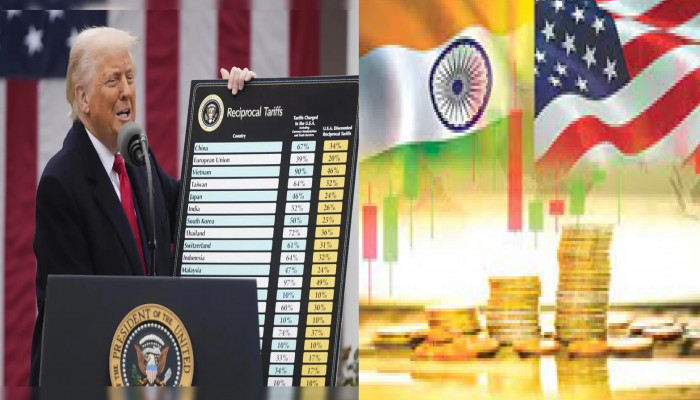Trump’s 27%, not 26 % tariff may give India’s textile, semiconductor sectors edge over Asian rivals: GTRI
- In Reports
- 02:41 PM, Apr 03, 2025
- Myind Staff
US President Donald Trump's decision to impose higher tariffs on several Asian and European countries, including China, Vietnam, Taiwan, Thailand, and Bangladesh, creates a strategic opportunity for India to expand its role in global trade and manufacturing, according to Global Trade Research Initiative (GTRI) Founder Ajay Srivastava.
Srivastava mentioned that Indian goods like steel, aluminium and auto-related products will have a 25% tariff, while items such as pharmaceuticals, semiconductors, copper, and energy products will not have any tariffs. India will face a reciprocal tariff of 27 percent on the remaining products, not 26 percent as previously reported. The notification's fine print clarifies that the tariff for India will be 27 percent, says Srivastava. "Goods from India face a 25 per cent tariff on steel, aluminium, and auto-related goods, and no tariffs on pharmaceuticals, semiconductors, copper, or energy products. For the remaining products, India is subject to a reciprocal tariff of 27 per cent," said Srivastava.
India faces a 27% tariff on its exports to the US , while other countries face even higher rates—China at 54%, Vietnam at 46%, Bangladesh at 37%, and Thailand at 36%. This lower tariff gives India an advantage in several industries. One major opportunity lies in the textile and garment sector. Since Chinese and Bangladeshi textile exports have higher tariffs, Indian manufacturers have a chance to capture a larger market share, attract new production units, and boost exports to the U.S.
"One of the most prominent areas of opportunity lies in textiles and garments. The high tariffs on Chinese and Bangladeshi exports create room for Indian textile manufacturers to gain market share, attract relocated production, and increase exports to the U.S," said GTRI founder. India has a strong base in textile production and lower tariff rates, which are expected to boost global demand and attract new investments in the sector. The electronics sector, including telecom and smartphones, is likely to benefit. Since the US has imposed high tariffs on Vietnam and Thailand, these countries may lose their cost advantage. Meanwhile, India has already invested in electronics manufacturing through government initiatives like the Production-Linked Incentive (PLI) scheme, making it a strong contender as a preferred destination.
The semiconductor industry has promising growth opportunities. With a 32% tariff on Taiwan, companies might consider moving parts of their operations to India—if the right infrastructure and policies are in place. Overall, changes in U.S. trade policies could work in India's favor by bringing in investments in important industries and strengthening its position in global supply chains.







Comments